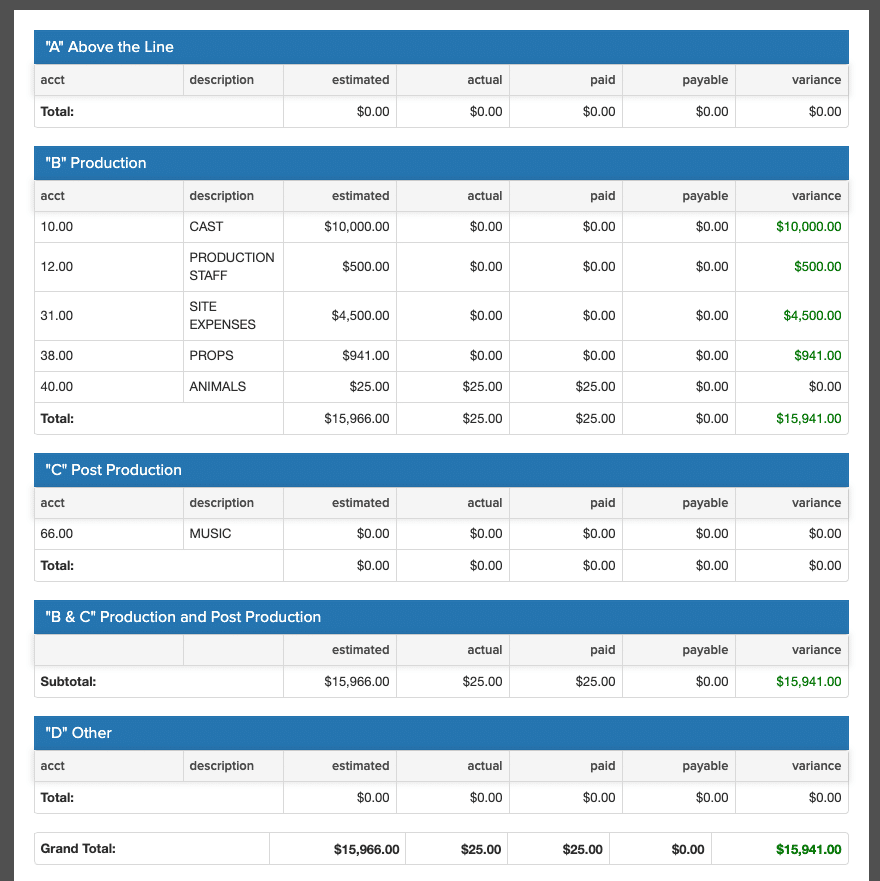
Creating a film budget from scratch is no easy task, no matter your level of experience.
Just like writing or editing, budgeting is a beast of its own, and a monumentally important part of the filmmaking process. But before we go any further, let’s make sure we define exactly what a film budget is.
In short, a film budget is a financial plan that details the projected costs of making a movie. A film budget includes expenses like cast & crew, equipment, locations, and post-production.
So not only is a film budget crucial for you and your team to gain visibility into where the costs for your film are balanced, it’s imperative for would-be investors to understand your project’s overall price tag, and how far away it may be from profitability. Without that information, there’s not a chance they’ll roll the dice on your production.
Of course there are budgeting softwares out there than can make your life easier, Celtx being one of the most popular.
If you’re an indie filmmaker without big resources and are just someone look to start with the basics, it’s important to understand the fundamentals of a film budget and all of its necessary components.
Chances are you’re coming here from two different angles: 1) you need a more generalized, preliminary budget to present to film financiers as a way of outlining costs, or 2) you’re already funded and need a comprehensive budget to prepare for your shoot. Regardless of where you’re coming from, the basics are the same, and the elements you need to organize and include remain the same as well (albeit with more detail).
Throughout this article, you’ll learn the basics of how to manage a film budget, what to include, and how to actually get started with a film budget template you can start using right away.
Regardless of whether you have funding or your project is even planned out, it’s possible to create a detailed and accurate film budget estimate. The sooner you do, the sooner you can identify areas you may need to be more cost-conscious or make other creative or financial adjustments.
Above the Line vs Below the Line
A film budget can be categorized in approximately one million different ways, but if there is only one thing you walk away from this article understanding, it should be the difference between “above the line” and “below the line” costs.
Above the Line
Above the line costs are anything related to your directors, producers, writers, and main actors. Plain and simple.
This includes their respective rates as well as any other expenses related to facilitating their work — airfare, accommodation, transportation, food, equipment, and so forth.
Also included are any development-related costs for the project, which includes a writer’s fee, any costs for rewrites, producers’ fees, and any costs associated with acquiring the rights to film a project.
Below the Line
Below the line costs, on the other hand, cover expenses for just about everything else, including personnel, equipment, and locations. Below the line crew members are everyone outside of the writers, producers, and directors, including department heads, like the Director of Photography or 1st AD.
Below the line expenses cover everything from pre-production to filming to post-production and wrap: including permits, vehicles, transportation, equipment rentals, and much much more.
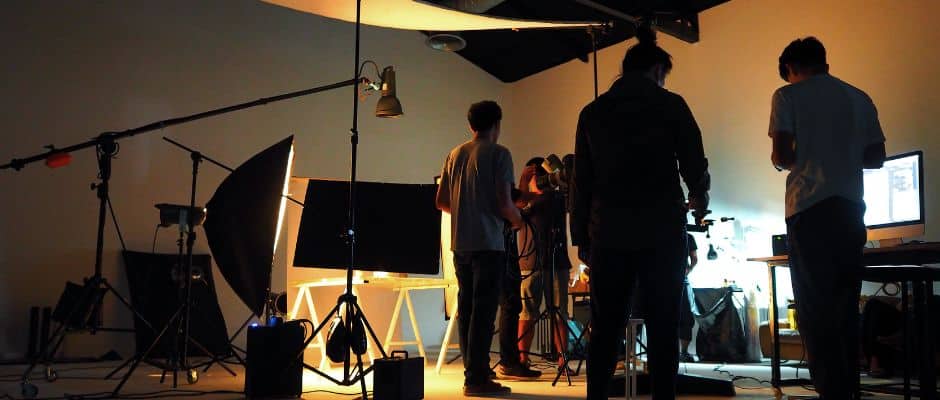
If you only create two categories in your budget, include above the line and below the line costs, which helps potential financiers (or producers) easily understand where the costs of a project are weighted.
Production Budget vs Total Budget
Unless you’re working on a budget at the studio level, you likely won’t need to concern yourself with this differentiation, but it’s still important to understand.
Production Budget
A production budget accounts only for the costs of, well, the production.
That includes pre-production, post-production, acquiring rights, and everything else that we’ll cover throughout this article. What’s more notable is what it does not include, like marketing and distribution.
Total Budget
A total budget, on the other hand, includes these other expenses outside of the production itself, like marketing and distribution. If the production budget is the cost of creating a product, the total budget includes how much it costs to advertise, market, distribute, supply, and deliver that product to audiences.
It’s this distinction that sometimes creates confusing headlines, like how a movie that cost $100M to produce grosses $150M at the box office and still somehow loses money. How? Because by the time the studio spent tens of millions more money on marketing and putting the film in theaters, as well as press tours, premieres, and other promotions, the “production budget” was only one half of the overall price tag.
In other words, within the film business, the production budget covers the cost of the ‘film,’ while the total budget (top sheet) includes the cost of the ‘business.’
What is a Top Sheet?
This total budget is often given to the producer through what’s called a top sheet (different than a “call sheet“). A top sheet is usually the first thing investors look for when deciding on whether or not they will approve and move forward with a project or not.
Top sheets provide a snapshot of your overall estimated production budget, broken down into distinct levels which contain financial information on all the accounts necessary for the execution of your project. Top Sheets are effectively universal in their content and, as mentioned, they are absolutely expected.
Long story short, it’s definitely in your best interest to both have one.
The Easiest Way to Create a Top Sheet is to Let Celtx Do It For You.
- As shown below, our system will populate a master budget as you complete your script breakdown and flesh out your production catalog, allowing for the dynamic generation of fully customizable Top Sheets and other budgetary reports, all properly formatted and containing all pertinent information.
- When you’ve completed a preliminary budget in Celtx, you’re only a click away from having your Top Sheet ready for distribution.
What’s Included in a Film Budget?
As you know, the budget of any production project is largely dependent on a number of high-level factors: genre, the stage of your project, who the budget is being developed for, etc. The fifteen elements below, however, are the fundamental pillars of film budgets of any shape, size, or scope.
- Pre-Production and Wrap Crew
- Materials and Expenses During Pre-Production and Wrap
- Shooting Crew Expenses
- Location Expenses
- Studio Rental and Related Expenses
- Set Construction Labor
- Set Construction Materials
- Equipment Rental
- Hard Drives and Transcoding
- Director or Creative Fees
- Talent Costs and Other Fees
- Other Talent Expenses
- Editorial Completion
- Final Cut
- Miscellaneous Costs
1. Pre-Production and Wrap Crew
Without thoughtful scheduling, pre-production can turn into a long, protracted, and expensive part of your film , and that’s before cameras even start tolling. That’s why it’s crucial you map our scheduled for rehearsals, camera tests, location scouts, equipment transportation costs, fittings, and anything else that needs to happen before day 1.
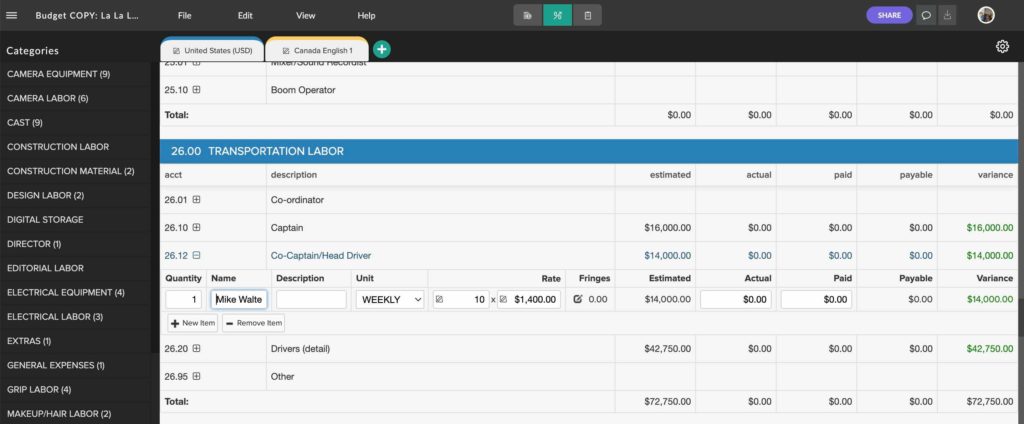
Every department is going to be different in terms of how long they’ll need to prepare and closeout before and after a shoot. The VFX department on a Marvel movie, for example, will need significantly longer to prepare for their shoot than, say, the Props department. Consider this as you map how long your crew needs to ramp both up and down.
2. Materials and Expenses During Pre-Production and Wrap
The last area covered the cost of the staff to get their departments up and running before day 1 and completely closed out after the last shooting day. This second section will cover all of the working meals, scouting, transportation, reimbursements, per diems, casting, and more related to their pre-production and wrap work.
3. Shooting Crew Expenses
This is the part of your budget that you can categorize as any costs related to the film crew responsible for actually shooting your project. Crew pay, craft service, meals, security personnel, utilities, and more are all included here.
Make sure to create room for overtime, which will be an inevitably at least once or twice during your project. Likewise, make sure to budget for at least two “pick-up days” at the end of your shoot where you can capture anything that may have been missed along the way.
4. Location Expenses
Film permits for any public locations, shuttles to get crew on-site, air-conditioning to cool green rooms, trailers for your actors, bathrooms for your crew, base camp lights for your night shoot, and more all go right here.
If it has anything to do with securing a location, getting to and from a location, or facilitating an on-location shoot, add it to this part of your budget.
5. Studio Rental and Related Expenses
Large projects need to have a significant chunk of their budget reserved for production offices, dressing rooms, and studio spaces. Where will your operation be based? How many desks, computers, Wi-Fi routers, printers, and more need to be installed so that everyone can do their jobs?
For the shoot, is everything being filmed on location or will you need to rent studio space to film in a controlled environment? Anything related to office space, office expenses, or studio leases goes in this section.
6. Set Construction Labor
As with many of these budget items, it’s dependent on the type and scope of the project. If you’re preparing a larger budget film, you may likely need more dedicated set building and design professionals like a Prop Master, Art Director, or Production Designer.
Their pay rates, along with any other Production Assistants or other roles who work in their departments, are added here.
7. Set Construction Materials
This is a more amorphous part of your budget where you can include anything from power tools to paint to curtains to set signage. Generally it should include all expenses related to facilitating the work of your set construction laborers (ex. Prop Master).
As always, ensure each line item is descriptive and clearly written so you don’t lose track of anything down the road.
8. Equipment Rental
Camera cranes, C-stands, lights, cameras, and every piece of equipment related to shooting your action should go here. As you can imagine, this will likely be a sizeable portion of your budget, regardless of the genre.
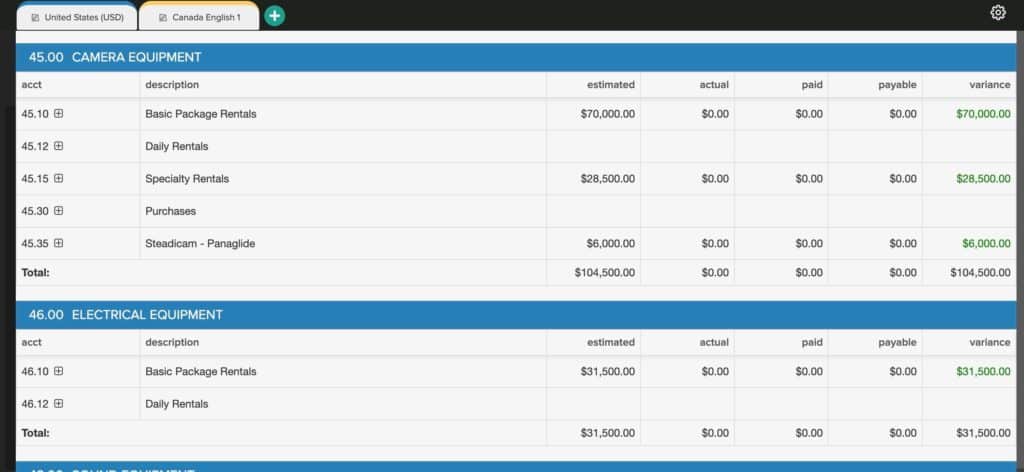
This is also where you’ll include costs for any “kit fees,” or paying an additional sum for a person or department that may include their own equipment. This could be a Director of Photography who has their own Alexa camera they want to use, or an Office Production Assistant who is using their own computer (rather than one supplied by the production).
If it’s any piece of office or on-set equipment you’re paying to temporarily use, add it here.
9. Hard Drives and Transcoding
This may not be the most intuitive section of your budget, but it is just as important as all the others. Include costs for hard drives that can safely store and manage all of the precious footage that your cameras are capturing on a daily basis, as well as dedicated drives for dailies, rough cuts, and backups.
It’s wise to confer with your post-production team as far in advance as possible about to understand their needs and related costs for capture and storage throughout the shoot.
10. Director or Creative Fees
As you can likely guess, this is where you’ll factor in costs for your director, writers, and creative producers, as well as any other fees that their employment will incur. If you need to purchase the rights to an existing screenplay or story, those costs will also go here.
11. Talent Costs and Other Fees
Another fairy self-explanatory section, this is where you’ll account for the cost of your cast. How many cast members are there, how much of their time will you need, and what will each of their work day’s cost?
If your cast members are union members, make sure to factor in any relevant union fees or dues here as well.
12. Other Talent Expenses
The previous section was just to get your cast members in the door. Now how about food, hotels, airfare, ground transportation, per diems, assistants, trailers, and anything else you’re contractually obligated to provide them during the shoot?
Any other costs associated with facilitating your talent can be put in this section.
13. Editorial Completion
Outside of your post-production labor, equipment, and office space expenses, what other post-production related costs do you need to account for?
Here is where you can include anything related to music licensing, sound mixing, narration recording, or incidentals. Other editing fees and expenses can be included in this section as well.
14. Final Cut
Depending on your project, you may need to budget for an additional phase of post-production that included close captioning, dubbing, and post-production supervision. If necessary, added those late-phase costs right here.
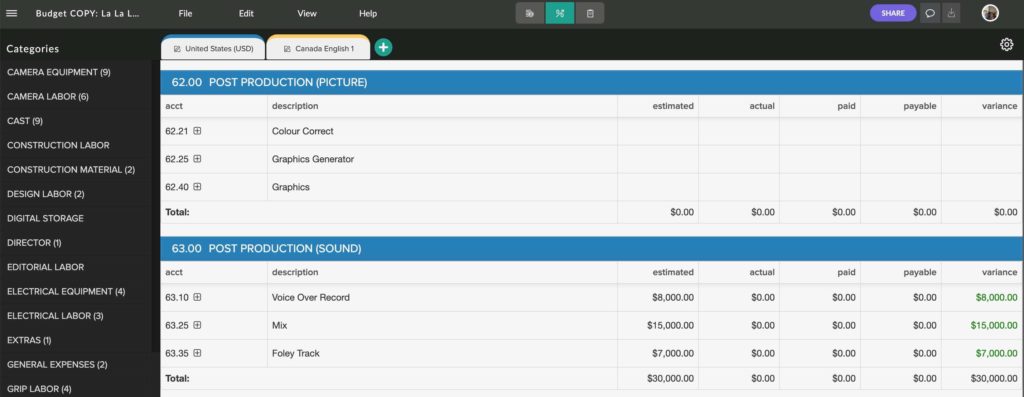
15. Miscellaneous Costs
Anything you didn’t already cover? Add it here. More so this is where you can account for the unexpected: a location falls through at the last minute or one of your actors gets really sick in the middle of the shoot.
As a general rule, you’ll want to set aside about 10% of your budget for unexpected issues as a contingency plan.
This is where you’ll also include costs for your production insurance, as well as the deductible if there is any loss or damage you need to claim.
Best Practices for Budgeting a Film
There are entire books dedicated to thoughtful film budgeting, as it’s a science and an art all on its own. Those who master it can become celebrated film producers, and will likely have no issue finding work.
That said, it requires practice and experience to master. If you’re just starting out, there’s obviously a library of information to learn, but the list of quick tips below can give you some early guidance and best practice advice for how to begin thinking about converting your screenplay into an accurate and actionable film budget.
1. Calculate Your Pages Per Day
If there’s one overarching metric that drives your film budget, it’s the number of shoot days your project requires. That means creating a budget begins with calculating that number of shoot days you need.
Major Hollywood blockbusters generally shoot only 1-2 pages of script per day. Well-funded independent films, on the other hand, more often shoot 4-5 pages a day, which low and micro-budget films shoot 8 or more pages per day. This is hugely dependent on your genre (dialogue-heavy scenes can be shot quickly compared to logistically-heavy action scenes), but give your budget a firm starting place.
2. Prioritize Complex Scenes
Because dialogue scenes are relatively fast and cost-effective to shoot, it’s wise to prioritize effects-heavy scenes and sequences and use them as anchors for your both your schedule and your budget.
If a 1-page action scene requires has simple effects or movement, assume it will take twice as long to shoot. If the scene calls for more advanced effects or movements, assume it will take four times as long to shoot and budget accordingly.
3. Budget Actors
One of the oldest stories in Hollywood is an exciting film project blowing all or most of its budget on a big name actor. It’s not advisable, but it illustrates what a dramatic effect one person can have on your film budget.
Consider who you’re targeting for casting and budget accordingly. The more famous, the more expensive obviously. Your cast members are paid on a per-day basis, so carefully calculate how many scenes they appear in and how many shoot days they’ll be needed.
Assume the number of shooting days they’ll be needed is roughly double the number of scenes they appear in.
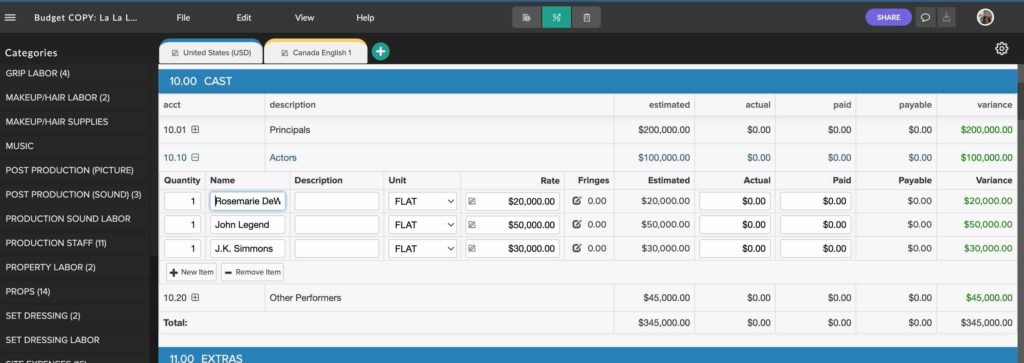
4. Budget Crew Rates
Like talent, crew members’ rates are also calculated per day, so budgeting for crew is as simple as multiplying their respective day rate by the number of shooting days. For example, if you have an 75-page script and you’re shooting 5 pages per day, you’ll need all crew members for 15 days.
Keep in mind pre-production and wrap times for key departments, and the additional days they’ll need to prepare and close out.
5. Include Stunts and Special Effects
There is no quick formula for calculating the costs of stunts and effects, but seeing as they can quickly break a film budget, it’s crucial to consider these from the outset. Do you need stunt doubles, stunt coordinators, special equipment, second unit camera teams, or anything else to facilitate your shootout, bank heist, or sword fight?
Consider all materials, personnel, time, and costs for each of these effects.
6. Don’t Forget Vehicles or Animals
Another elements that sneaks up on the amateur film budgeter — vehicles and animals. Even if they only play small roles in your film, vehicles and animals come with their own rentals, crew members, insurances, and fees. Ensure all of these are accounted for early on.
Film Budgeting Software Templates
The good news: you’re not alone! You’re not blazing a trail trying to budget a film for the first time, which means there are a bevy of resources out there to light the path for you, including film budgeting softwares like Celtx.
Chances are if you’ve found your way to this blog, you’re keen to understand what tools you need to know to create your own preliminary or rough draft budget on your own (without breaking your budget, ironic isn’t it).
In this case, finding a film budgeting software like Celtx is the easiest way to start, and the fastest way to learn how these documents are traditionally prepared and organized as you can see from the image below.
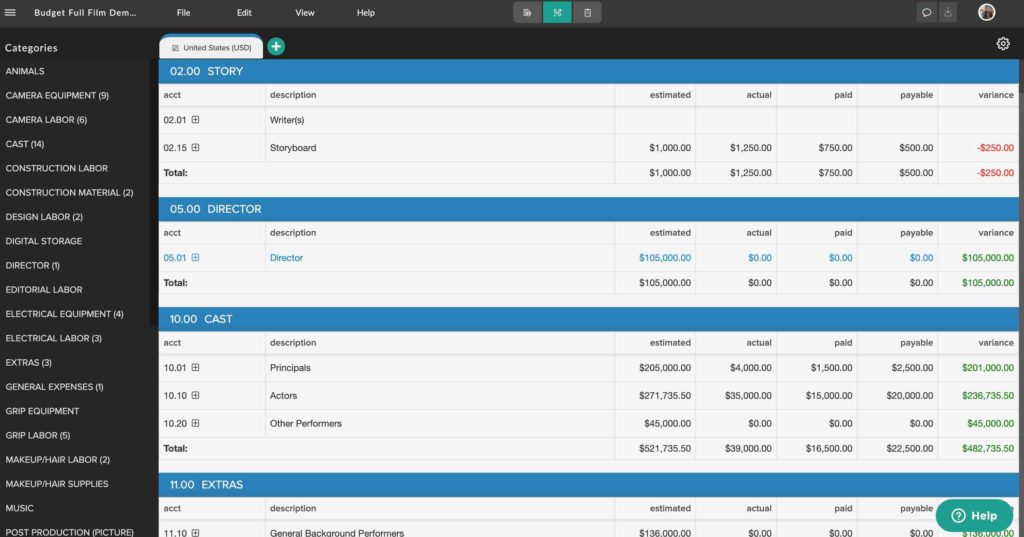
Celtx is a comprehensive pre-production software that uses industry-standard templates to build your film budget, document, and assign costs for all your production needs. Generate valuable budget reports, and keep your finger on the pulse of the forecasted and actual costs of your production.
Not only that, but you can also seamlessly transition from your script breakdown document to your film budget template with pre-filled information based on your breakdown, saving you a huge time expenditure along the way.
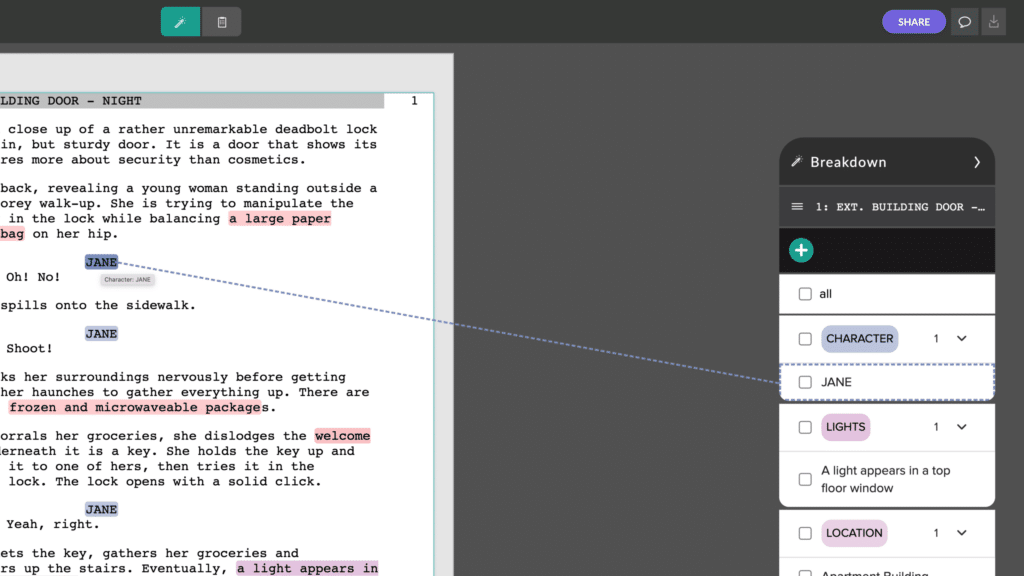
A good film budget template can help you work smarter, not harder, and ensure your film is as production-ready as possible.
Other Celtx Templates:
Conclusion
Each and every film budget should be uniquely tailored to fit your genre and unique project requirements. Budgets vary greatly depending on access to resources, style, and genre.
An independent horror movie, for example, is going to have a significant portion of its budget dedicated to prosthetics, makeup, and special effects, as opposed to a drama set on a farm, which will have much higher cost for animal wrangling.
There’s also the ever-present question of whether to allocate for personnel versus props or equipment. For example do you spend your camera budget on a hot-shot Director of Photography, or a hot-shot camera and lens package?
Ultimately, it’s up to you, and every single film and budget is different! Ensure that your budget matches your filmmaking priorities and fully considers the genre, audience, distribution channel, and more so that you can be as prepared as possible.
Celtx is designed to make every phase of the production process as accessible and seamless as possible. When you’re ready to get started with your film budget, give Celtx a try and see how it can make budgeting easier and more accurate than ever.

